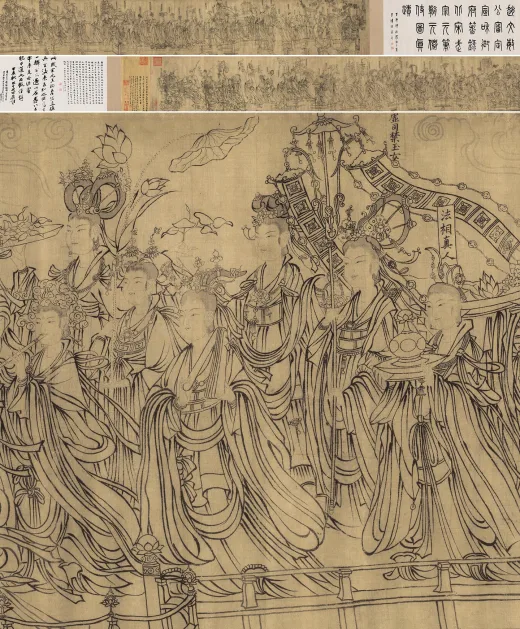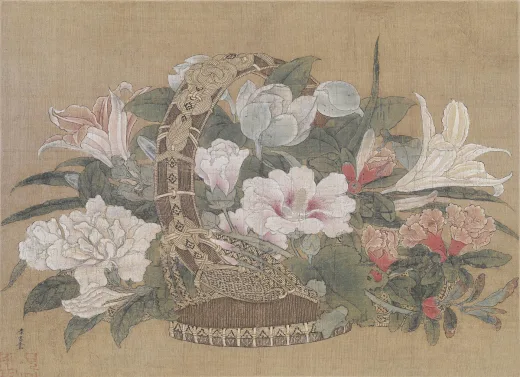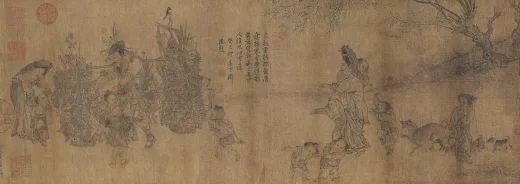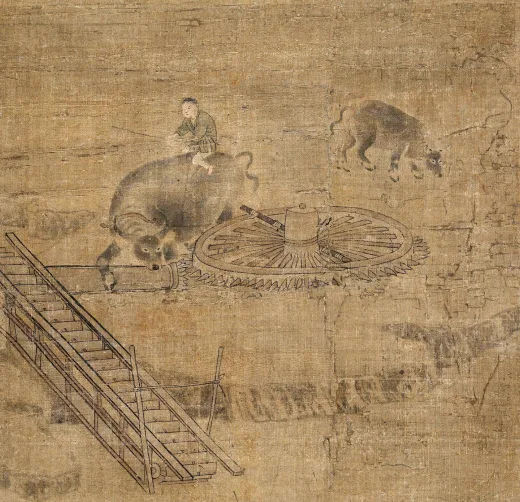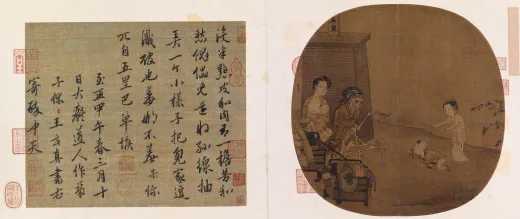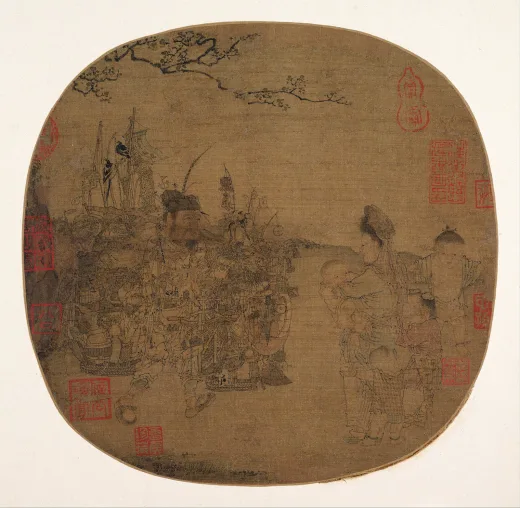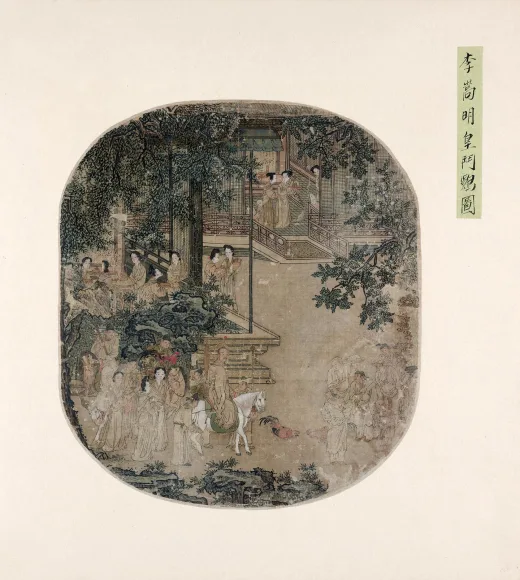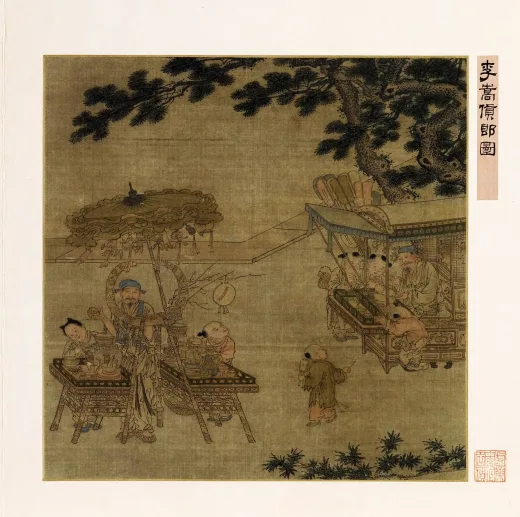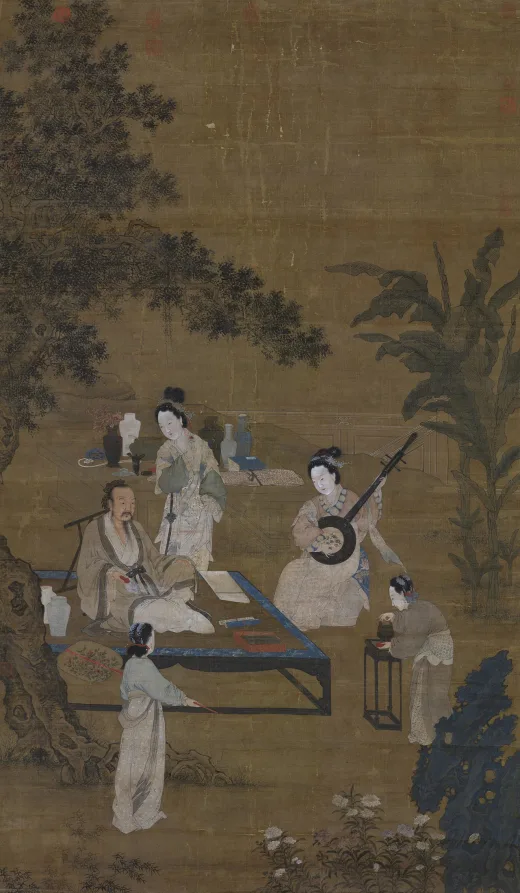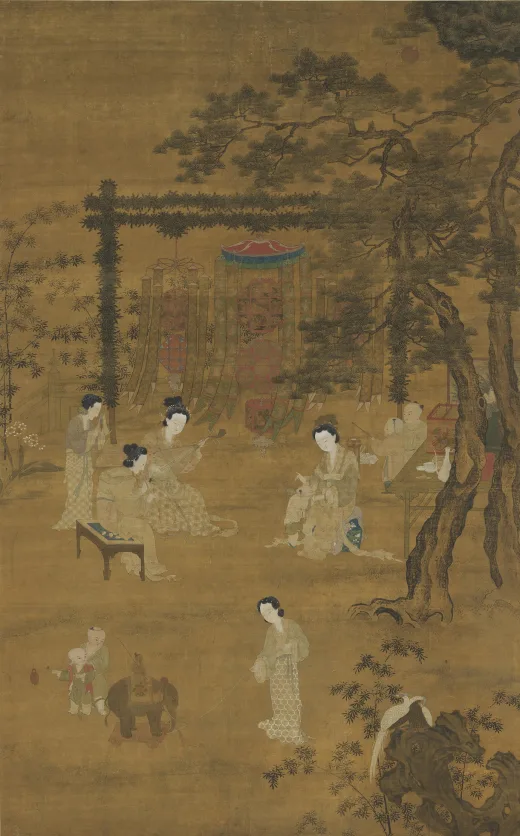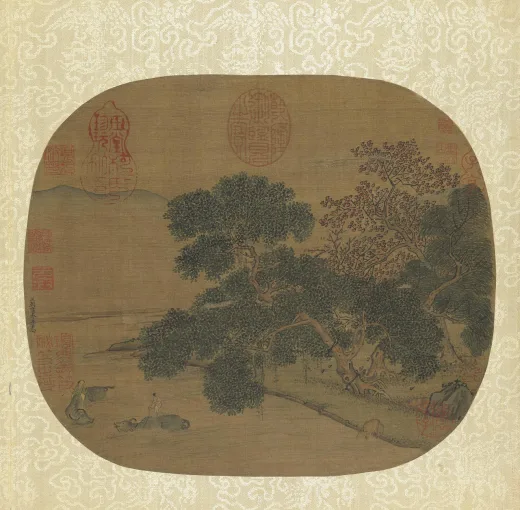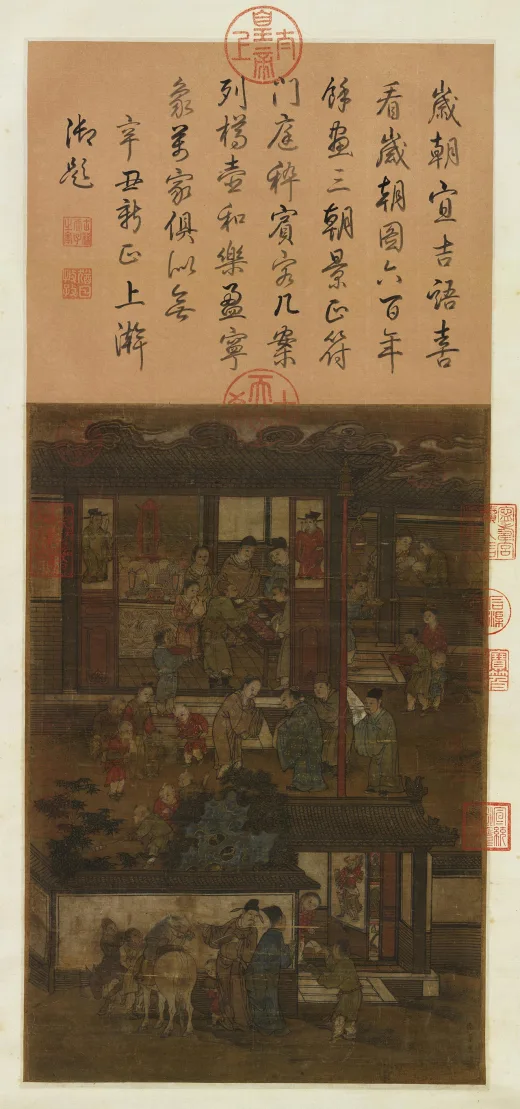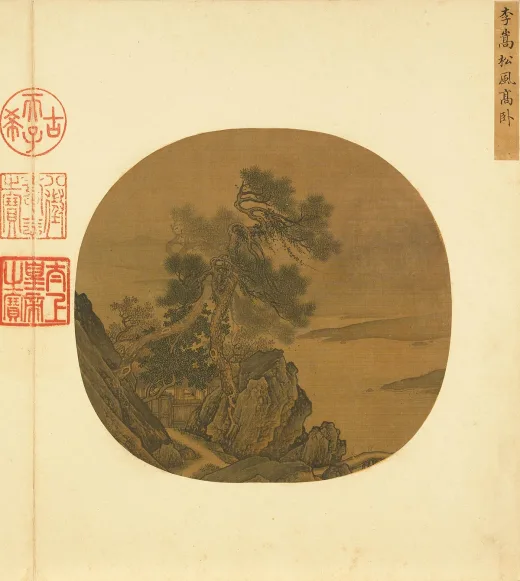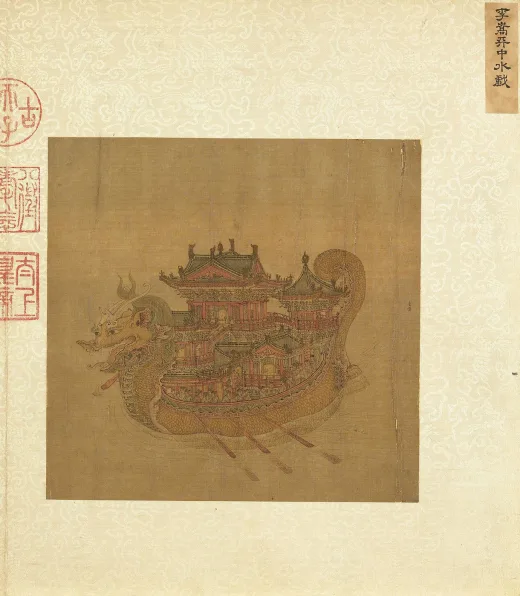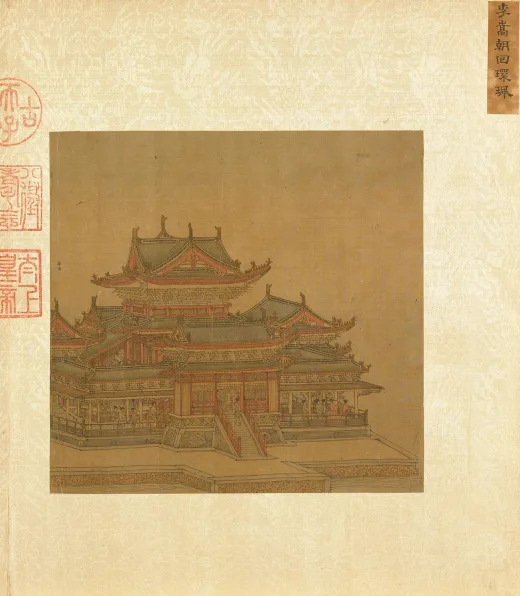李嵩界画《水殿招凉图》高清图片
原图尺寸:2976×3669像素(72 DPI)高清图
下载原图消耗2艺点
文件大小:31.80 MB
下载格式: ZIP ( PNG+JPG )
作品名称:宋李嵩水殿招凉图
Taking in the Cool at a Waterside Hall
作品作者:李嵩
创作时间:南宋
原作尺寸:本幅24.5x25.4
作品材质:绢本
收藏位置:台北故宫博物院

作品简介
重檐十字脊歇山顶,屋顶脊饰、瓦陇、斗栱、椽檐、山花面绘法极细腻。屋檐下方阑额上安补间铺作,当心间用两朵,次间各用一朵,完全符合宋代木匠建屋的技术规则。水殿下部自地面立永定柱,上施平坐,铺设地板,并置钩栏。建在池沼上廊桥,下用地袱,袱上立排叉柱,为研究宋代木桥、水闸宝贵资料。此图应是木工出身南宋院画家李嵩(约活动于一一九0─一二六四)所作。
The cross-shaped ridge of the double-eave, hip-and-gable roof here has every detail rendered clearly. Two intermediary brackets are above the central bay and single ones above the secondary bays in a style Here, there are no "topping lintels (P'u-pofang)," almost always found after the Chin and Southern Sung (1127-1279). The building is on an elevated foundation, followed by posts and lintels, and then brackets to support the floor. The bridge has supports, visible to the right, and two center rows of columns (p'ai-ch'a chu). Such understanding suggests the hand of a major Sung court artist, such as Li Sung, who started out as a carpenter. This is the 4th leaf from the album "Ming-hui chi-chen."
古代屋顶形象和细部装饰很丰富,此图为重檐十字脊歇山顶(由两个歇山顶十字相交而成,因在原屋檐下添加一层小檐,称为重檐。) 屋檐两头微微上翘,几条高起屋脊端头有兽头的收束构件(用以保护屋面两坡易漏雨的部份),垂脊前端则有仙人、蹲兽装饰。屋顶瓦陇与瓦当、飞椽、套兽绘法皆极细腻,屋顶山花面搏风版相当宽阔,正中安置垂鱼,沿边又有惹草装饰。(垂鱼是悬挂在山花中央的一个构件,它可遮挡缝隙,加强搏风版整体的强度。惹草则是钉在搏风版接头处,是象征性防火观念而来的装饰。) 屋檐下方阑额(檐柱之间起联系及承重作用的矩形横木)上安补间铺作,当心间用两朵,次间各用一朵,完全符合宋代木匠建屋的技术规则,临水殿建在水边或花丛之旁,构造灵活多样。画上有闸引湖水入渠道,流至宫苑内。建在池沼上的盝顶廊桥,下用地 ,上有排叉柱,柱上架额,额间架梁,是研究宋代桥梁、水闸的宝贵资料。款书但馀「 臣李 」二字,以画风论,应当是李嵩所作。
The cross-shaped ridge of the double-eave, hip-and-gable roof shown here has curved ends, ridge ornaments, sloping tiles, rafters and eaves, and sets of animal cap ornaments all rendered with exceptional detail. The barge-board panel is highly decorated. Below the roof is a bracketing system in which two intermediary brackets are found above the central bay and a single bracket above the secondary bays on either side. This form of construction closely correlates to Sung dynasty building practices. The bracket sets are located above the lintel and protrude from the corner column. There is no "topping lintel (p'u-po fang)," which was almost always found after the Chin (1115-1234) and Southern Sung (1127-1279). The building here is situated on an elevated foundation, followed by a post-and-lintel structure, and then bracketing to support the floor above. The veranda around the structure is decorated with railings. The covered bridge extending from the building has a support, visible to the right, along with two center rows of columns known as p'ai-ch'a chu. Consequently, this work is important for not only studying water control, but also Sung wooden bridge construction. Such apparent understanding of architecture suggests that this work came from the hand of a major Southern Sung court artist, such as Li Sung, who himself is said to have started his career as a carpenter. This is the fourth leaf from the album "Ming-hui chi-chen."
作者款識
臣李□。
技法
人物衣紋描法(勻稱線條)、工筆、界畫、皴法。
主题
| 主题(第一层) | 主题(第二层) |
|---|---|
| 建筑 | 水榭 |
| 建筑 | 桥 |
| 建筑 | 栏杆 |
| 树木 | 杨柳 |
| 人物 | 仕女 |
| 人物 | 侍从(侍女、童仆) |
| 人物 | 孩童 |
| 山水 | 江河 |
| 山水 | 奇石 |
| 建筑 | 水利 |
| 建筑 | 池水 |
| 建筑 | 庭院 |
| 器用 | 家俱(屏风) |
| 器用 | 童玩、纸船 |
| 器用 | 饮食器、酒器 |
